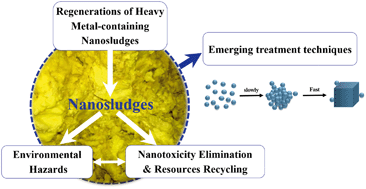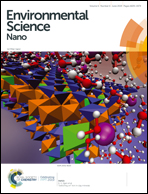Emerging investigator series: treatment and recycling of heavy metals from nanosludge
Abstract
Nanosludge is a type of sludge that contains nanoparticles and exhibits nanosize properties such as a high specific surface area, abundant defects and high surface activity. Heavy metal-containing nanosludge is derived not only from emerging applications of nanomaterials (e.g. additives, adsorbents and catalysts), but also from industrial processes such as electroplating and chlorate production. In this sludge, heavy metals coexist with nanosized mineral particles, as ionic states or directly in the form of solid nanophases. Heavy metal-containing nanosludge poses a potential environmental threat due to its high toxicity and lack of effective treatment methods. This review highlights the generation of heavy metal-containing nanosludge, its environmental impacts, and the challenges and developments in treatment technologies. A new strategy for the extraction and recycling of heavy metals by hydrothermal treatment is specifically emphasized, which is based primarily on the control of nanocrystal growth kinetics and nanoparticle surface properties. This review aims to provide new insights into the recovery and recycling of heavy metals from nanosludge for environmental pollution control and to identify emerging research opportunities in advancing this field.

- This article is part of the themed collection: Emerging Investigators Series


 Please wait while we load your content...
Please wait while we load your content...